Accessing Future Mixed Beans Yield in Zambia under a Changing Climate Scenario
Simfukwe Paul*, Syampaku M. Edward, Daka Alfred
School of Agriculture and Natural Resources, Mulungushi University, Kabwe, Zambia
*Corresponding Author: Simfukwe Paul, School of Agriculture and Natural Resources, Mulungushi University, Kabwe, Zambia.
Received: 15 December 2022; Accepted: 23 December 2022; Published: 29 December 2022
Article Information
Citation: Simfukwe Paul, Syampaku M Edward, Daka Alfred. Accessing Future Mixed Beans Yield in Zambia under a Changing Climate Scenario. International Journal of Plant, Animal and Environmental Sciences 12 (2022): 175-186.
View / Download Pdf Share at FacebookAbstract
Quantitative evaluation of the response of crop yield and crop water productivity to future climate change is important to prevent/mitigate the adverse effects of climate change. This study assessed the future impact of climate change on rain-fed mixed beans production in Zambia. Mixed beans yield data from 1976 to 2000, was used, aggregated by province and was detrended for non-climatic factors, then correlated with the climatic variables from WABAL function in MOSAICC programme. The significantly correlated variables were regressed to generate coefficients (xi) for each variable (ai) and the intercept (b) to build models for each province. Downscaled data from three GCMs of CanESM2, CNRM-CM5 and MPI-ESM-MR were used to forecast the 2011-2069 yields under RCP 4.5 and RCP 8.5. By comparing the historical and the future mean yields for each RCP, the change was computed and judged for significance. The general trend in the projected climate simulated future yields by the three GCMs under the two RCPs showed a decrease in yield in Agro-Ecological Region (AER) III, IIb and I, and an increase in AER IIa. The projected decrease was attributed to the temperature increase and rainy seasons tending to start later and end earlier than the historical average. This change calls for use of varieties that are more resilient to elevated mean temperatures, use of early maturing varieties, selection of suitable planting dates, the use of chemical fertilizers and the construction of irrigation and water conservancy facilities.
Keywords
Climate change; Climate variability; Crop yield; Impact; Representative concentration pathways
Climate change articles; Climate variability articles; Crop yield; Impact articles; Representative concentration pathways articles
Article Details
1. Introduction
The Global climate change and its impacts on food production have attracted great attention from scientists, government officials and farmers. The Intergovernmental Panel on Climate Change (IPCC) in the 9th August 2021 Press release, reported that there were greater chances of crossing the global warming level of 1.5°C or even 2°C in the next few decades, unless there are immediate, rapid and large-scale reductions in greenhouse gas emissions [1]. Global warming has caused significant changes to the climate in all regions bringing about increasing heat waves, longer warm seasons and shorter cold seasons in some cases more often reaching critical tolerance thresholds for agriculture and health [2]. Climate change has already been affecting food security through increasing temperature, changing precipitation patterns, and higher frequency of some extreme events, such as extremely high temperatures, drought, flooding, etc. [3,4], which often threaten sustainable crop production [2,5]. Projections by FAO, production reductions due to climate change for high-emission climate scenarios were rated at 20–45% for maize, 5–50% for wheat, 20–30% for rice, and 30–60% for soybean by 2100 [6]. Thus, Climate change poses an unprecedented challenge to agricultural development and the security of agricultural production systems.
Crop yield and Crop Water Productivity (CWP) are important indicators that can reflect regional agricultural production level and evaluate food sustainability [2]. Understanding crop yield responses to climatic changes and adaptation measures is key to climate resilient crop cultivation. This information is important for the purposes of policy formulation on adaptation measures and gaining insights in the impacts of climate change on water limited crop yields [7,8].
Mixed beans also called Common beans (Phaseolus vulgaris L.) are one of the most important grain legumes in most countries of Sub-Saharan Africa (SSA). Grain legumes are widely consumed in most parts of SSA and have been found to play an important role in the nutrition of both urban and rural households. Beans are a rich source of protein, carbohydrates, dietary fiber, vitamins, and minerals thereby offering health benefits to the consumer. In Zambia mixed beans rank second after maize in food security especially in the Northern and North Western Provinces where they are consumed at least weekly or twice a week [9]. Mixed beans are important to smallholder farmers as they are cash earners in addition to being high protein providers. According to World Data Atlas, Knoema [10] Northern Province is the top region by mixed beans area in Zambia. As of 2018, mixed beans area in Northern was 47,360 ha accounting for 56.00% of Zambia's mixed beans cultivated area of 84,566 ha. The top 5 regions (others are Muchinga, North-Western, Luapula, and Central) account for 89.63% of Zambia’s total production.
General Circulation Models (GCMs; also known as Global Climate Models), are the only tool that can hindcast and predict climate conditions. However, the GCMs that are used to predict climate changes are mixed in their forecasts of climate parameters, such as temperature and precipitation which in turn affect the crop water requirement and availability and crop production levels [11]. In addition, there are a number of uncertainties in using the GCMs in simulations of future climates and crop production levels such as: (1) What level of GHG (and aerosol) emission and concentration scenario should one use for projections of economic activity, population growth, and technological development? (2) What configuration, bias and internal variability should the GCM model consider? (3) What downscaling approach and configuration should the GCM take. There is a range of techniques that are used based on the use of global uniform and variable resolution atmospheric models, Regional Circulation Models (RCMs), and a wide spectrum of statistical downscaling approaches [12] and (4) What global Climate Sensitivity (CS) to greenhouse gas forcing does one assign to the GCM? [13-15]. These are not all the uncertainties, but the list reveals the wide variety and complexity of GCMs and the difficulty to identify a modelling algorithm that performs better than another [13,16]. Thus, the choice of a GCM may greatly influence the projected crop production [17]. Therefore, GCM applications provide a range of projected climate change and produce a range of effects with no probability specification, and the results are often too broad to be of practical use [11]. However, the combined use of GCMs, crop simulation models and statistical downscaling techniques are the primary tools available to assess climate change impact on crop growth and yield [18]. Therefore, the application of these models and techniques can help to understand climate change impact on crop growth and yield and offer a direct link between climate models, crop models, economic models, agrometeorology and concerns of society [19].
Climate change is a real threat to agricultural production in Sub-Saharan Africa and Zambia is not an exception. Mixed beans like many other crops are highly sensitive to changes in climate conditions. A better understanding of the impact of climate change on mixed beans yields is urgently needed to plan for adaptation. Therefore, aim of this study was to assess the future impact of climate change on rain-fed mixed beans production in the ten provinces of Zambia using historical weather and yield data and climate downscaling. These studies can facilitate planning adaptation policies or strategies to climate change, as they can provide scientific evidence that would guide the formulation of such policies or strategies.
2. Methods
2.1 Weather data
Gridded meteorological data were obtained from the Zambia Meteorological Department, compiled from stations with at least 30 years of daily values without gaps, resulting in 26 and 14 out of 39 weather stations (Figure 1) for rainfall and temperature analysis respectively.
2.2 Building the yield function with observed data
The yield function was built using the historical mixed beans yield of 1976-2000 data which was obtained from the Ministry of Agriculture, Early warning Unit, Zambia. The crop yields (metric tonnes/hector) for mixed beans were calculated from the mixed beans production figures in each district over the area planted. The district data was aggregated for each province to come up with the provincial yield rate. The yield was plotted against the time using scatter plot functions in Microsoft excel (Microsoft Office Professional Plus 2016, Version 2204). The scatter plot of the yield over time was fitted with a linear trend line for the province data. The observed yields through time were affected by both climatic and non-climatic factors (e.g. improved technology, improved management, and change in policy) represented by short-term and long-term changes respectively. In crop modelling the focus is on the climatic factors and therefore, effects of non-climatic factors were removed from the yield data. This was achieved by removing the long-term trend (detrending) by means of subtracting the calculated trend yields from the observed yields.
The detrended historical (1976-2000) yield was correlated with the climatic variables, such as rainfall and temperature, and crop-specific soil water balance parameters such as water deficit/excess and water satisfaction index from WABAL function in Modelling System for Agricultural Impacts of Climate Change (MOSAICC) programme, FAO (WABAL is a model designed to simulate the soil water balance at crop level in the estimation of crop yield). These climatic variables (water balance outputs) were generated for the historical period of 1982-2015 using the WABAL function. The selection of the significantly correlated variables with the detrended yield was done by using a step wise regression in Microsoft Excel (Microsoft Office Professional Plus 2016, Version 2204). At each step, the variables with the highest p-value were eliminated while maintaining a high R-sq of the regression (i.e., maintain the high predictive value of the function). These variables were also checked for correlation among themselves. Where two variables were strongly correlated, one was dropped based on its R-sq value (if it had a lower R-sq) assuming that it was represented by its correlate. The final selected variables were regressed with the detrended yield and generated the slopes (xi coefficients) for each variable (ai) and the function intercept (b) which were used to build the models for each province. The variables and coefficients for each province are listed in Table 2. These models/functions were used to hindcast and predict yields for the three GCM’s downscaled data.

2.3 The Global Circulation Models (GCMs) for projections
In this study we used downscaled data (WABAL water balance outputs variables) from three general circulation models, belonging to the Fifth Phase of the Coupled Model Intercomparison Project (CMIP5), namely, the CanESM2, CNRM-CM5 and MPI-ESM-MR (Table 1). We considered the historical scenario of 1972 to 2000 and two future Representative Concentration Pathways (RCPs) of 4.5 W m-2 and the 8.5 W m-2 scenarios covering the future period of 2011to 2069 which was further divided into the near future period (2011to 2040) and the far future period (2041 to 2069).
|
CMIP5 Model ID |
Modelling Centre |
Resolution Lat. |
Scenarios |
|
CanESM2 |
Canadian Centre for Climate Modelling and Analysis, Canada |
2.81° × 2.81° |
hist: 1941 – 2000 |
|
rcp4.5: 2010 – 2100 |
|||
|
rcp8.5: 2010 – 2100 |
|||
|
CNRM-CM5 |
National Centre for Meteorological Research, France |
1.4° × 1.4° |
hist: 1941 – 2000 |
|
rcp4.5: 2010 – 2100 |
|||
|
rcp8.5: 2010 – 2100 |
|||
|
MPI-ESM-MR |
Max Planck Institute for Meteorology, Germany |
1.875° × 1.875° |
hist: 1941 – 2000 |
|
rcp4.5: 2010 – 2100 |
|||
|
rcp8.5: 2010 – 2100 |
|||
|
Source: www.meteo.unican.es/downscaling/login.html and Zubler et al. (2016). |
|||
Table 1: Description of the GCMs.
2.4 Simulating historical and future yields with GCM-output data
With the above yield functions, using selected variables, the future yields were computed with each GCM’s climate projection. Modelled climate data from GCMs, for both historical and future periods was used to compute the change for an each GCM from historical to future period(s). For each province the observed detrended yield was compared with the predicted yield from the function. In each case, the calculated yield, captured the changes in the observed yield in the high and low peaks. This was checked for all the GCMs for all the ten provinces and was satisfied that the predicted yields were in conformity with the observed yields. Figure 2 below shows the case of central province. The plot of the Residual against the detrended were also used to validate the yield functions (i.e., validation was confirmed by a weak correlation between the yield and the residuals).
2.5 Projections and calculation of changes in the mean yields overtime
Using the above models/functions the predicted yields were calculated for the future yields under the two RCPs for each GCM. For each GCM, a comparison was made between the statistical mean of historical and future yields for each RCP. The deviations of the statistical mean of the predicted yields from the historical mean were tested for significance using the mean and the Standard Deviation (SD). If the average change from the historical mean was less than 1 SD, the change was not significant, if it was between 1SD and 2SD, the change was significant (*); if it was between 2SD and 3SD it was very significant (**) and if it was greater than the 3SD, the change was extremely significant (***). Dealing with multiple GCMs afforded an opportunity to compare the changes using different methods and thereby obtained an average impression of the changes that would most likely occur in the area.
3. Results
3.1 Regression models
The final variables that were selected for each province with their Xi coefficients and the function intercept (b) of the yield function are presented in Table 2. These coefficients were used to build the models. For example, the model for Central Province was:
Yield = -0.006536714 (ETA2) - 0.006212071 (ETA3) + 0.00658509 (TWR) - 5.072303215
|
Province |
Variable |
Coefficients |
Province |
Variable |
Coefficients |
|
Central
|
Intercept |
-5.072303215 |
Muchinga
|
Intercept |
0.804537306 |
|
ETA2 |
-0.006536714 |
ETA1 |
-0.049519545 |
||
|
ETA3 |
0.006212071 |
ETA2 |
-0.01789446 |
||
|
TWR |
0.00658509 |
ETA4 |
0.012232676 |
||
|
DEF2 |
0.005205252 |
||||
|
Copperbelt
|
Intercept |
-1.894108356 |
Northern
|
Intercept |
-1.247219792 |
|
ETAt |
-0.001548937 |
ETA1 |
0.044853186 |
||
|
ETA4 |
0.015550055 |
DEF3 |
0.002535834 |
||
|
DEF4 |
-0.001619067 |
DEF4 |
-0.008289324 |
||
|
Eastern
|
Intercept |
-1.920294858 |
North-Western
|
Intercept |
-2.924933174 |
|
ETA3 |
0.006364041 |
ETA1 |
-0.053241217 |
||
|
EXC3 |
0.003250954 |
EXC3 |
-0.000471392 |
||
|
DEFt |
0.000264468 |
TWR |
0.005474855 |
||
|
WSI (corr.) |
0.011653496 |
||||
|
Luapula
|
Intercept |
0.018281105 |
Southern
|
Intercept |
-0.147584882 |
|
ETA2 |
-0.011061075 |
ETA4 |
0.000307644 |
||
|
ETA4 |
0.005890558 |
EXC1 |
0.181510391 |
||
|
DEF2 |
0.002353295 |
DEF4 |
-0.000443996 |
||
|
DEF4 |
-0.005754942 |
||||
|
Lusaka
|
Intercept |
-0.345795789 |
Western
|
Intercept |
1.939151719 |
|
ETA1 |
-0.086600491 |
ETA1 |
-0.05146789 |
||
|
ETA3 |
0.008654157 |
EXC1 |
-14.27515226 |
||
|
EXC2 |
0.016972455 |
DEFt |
0.000827461 |
||
|
DEF3 |
0.00213316 |
DEF3 |
-0.001877612 |
||
|
Where: ETA= Actual evapotranspiration; ETAt = Total ETA over crop cycle; DEF= Water deficit; DEFt= Total water deficit over crop cycle; EXC= Excess water; EXCt= Total water surplus over crop cycle; WSI=Water stress index correction; TWR= Total water requirement; numbers 1-4 represent crop growth stages of initial (1), vegetative (2), flowering (3) and maturation (4). |
|||||
Table 2: Coefficients for the ten provinces.
3.2 Comparison of historical and the projected climate simulated future yields for two RCPs for the three GCMs
For each GCM, the projected (future) mean yield in each RCP was compared to the historical mean yield. The deviations of the statistical means, from the historical (future yield compared to historical yield- changes) means were tested for significance. The following graphs (Figure 3-7) shows the historical yields and the future climate simulated yields for two RCPs for the three GCMs and the corresponding changes in the near future (2011-2040) and the far future (2041-2069).
3.2.1 Central and Copperbelt provinces
Projected changes in mixed beans for Central province are displayed in Figure 3. The projected yields significantly increased under both RCPs for all three GCMs in the near future (2011-2040) even though the changes in the CNRM were not significant. The far future (2041-2069) projections were uncertain, as the projection showed that the yields would significantly increase under RCP 4.5 in MPI and under RCP 8.5 in CNRM but would significantly reduce under RCP 8.5 in CanESM.
The projected mixed beans yield on the Copperbelt, significantly decreased across all time periods regardless of the representative concentration pathway under the MPI GCM. Similarly, the CanESM also project a decrease throughout the time periods in all the RCPs but were only significant under both RCPs in the far future. The CNRM showed very small increases throughout the times and RCPs which were way below 1SD, thereby introducing a bit of uncertainty in the projections, see Figure 3 below.
3.2.2 Eastern and luapula provinces
The projection of mixed beans yields shows an increase in Eastern province under both RCPs for all GCM but was only significant in CanESM for both RCPs in the near future, in all three GCMs under RCP 4.5 and in CNRM under RCP 8.5 in the far future (Figure 4).
In Luapula the CanESM consistently projected a decrease in the yields which were significant in the near future (2011-2040) under RCP 8.5 and in the far future (2041-2069) under RCP 4.5 and extremely significant (***) in the far future (2041-2069) under RCP 8.5. The MPI projected a very significant (**) decrease in the far future (2041-2069) only under RCP 4.5 while the rest were non-significant increases. The CNRM projected non-significant increases across all time periods regardless of the representative concentration pathway. Even though the overall beans yield projections could be describe as decreasing in Luapula Province, especially in the far future, the projected changes were characterised by uncertainty evidenced through model disagreements with regard to direction and magnitude of changes, see Figure 4 below.
3.2.3 Lusaka and Muchinga provinces
The projected mixed beans yields decrease in Lusaka province under both RCPs for all GCMs but was only significant in the near future (2011-2040) for CNRM under both RCPs (Figure 5). The projections were all significant in the far future (2041-2069) under both RCPs, with the CanESM recording extremely significant (***) in both RCPs and MPI very significant (**) under RCP 8.5.
In Muchinga province, the CanESM consistently projected a decrease in the yields which were significant (*) in the near future (2011-2040) under 8.5, and in the far future (2041-2069) under both RCPs. The MPI projected non-significant increases in the near future (2011-2040) and decrease in the far future (2041-2069). The CNRM projected a non-significant increase under RCP 4.5 for both time periods and a non-significant decrease under RCP 8.5 for both time periods. Even though the overall projection may be a reduction, the projections were characterised by uncertainty especially in the near future, see Figure 5 below.
3.2.4 Northern and North-Western provinces
The MPI GCM consistently projected a decrease in the mixed beans yields in Norther province. The decreases were very significant (**) in the near future (2011-2040) under both RCPs, very significant (**) in the far (2011-2069) under RCP 4.5 and extremely Significant (***) under RCP 8.5. The CanESM GCM projected yield decrease throughout but were only significant (*) in the far future (2011-2069) under both RCPs. The CNRM projected small insignificant increases throughout the time periods regardless of the RCPS, thereby introducing uncertainty in the projections.
In North-western Province (Figure 6) almost all the GCMs projected decreases in yields throughout the time periods regardless of the RCPs. However, the decrease was only significant under MPI GCM in the far future (2011-2069) under RCP 8.5. The CNRM recorded a non-significant increase in the near future under RCP 8.5, see Figure 6 below.
3.2.5 Southern and Western provinces
In Southern Province, the projected yields in mixed beans were characterized by uncertainty. This is apparent in model disagreements on direction and size of change for both concentration pathways (Figure 7). The MPI projected non-significant increase under RCP 4.5 in the near future and non-significant decreases in the far future under both RCPs. The CNRM projected non-significant increases throughout the time periods regardless of the RCPs except for an insignificantly small decrease in the far future under RCP 8.5. The CanESM GCM projected decreases throughout the time periods but was only significant (*) in the far future under RCP 8.5.
In Western province, the general trend of projections showed a decrease in all GCMs and both concentration pathways. The only significant (*) decreases recorded were by MPI in the far future under RCP 8.5 and by CanESM in the far future under RCP 4.5. A few small positive insignificant changes were projected by CNRM under RCP 4.5 in both time periods and by MPI under RCP 8.5 in the near future only, thereby introducing uncertainty in the projections, see Figure 7 below.
4. Discussion
4.1 Climate impact on mixed beans yield under the two Representative Concentration Pathways scenarios by three GCMs
The general trend in the projected climate simulated future yields by the three GCMs under the two RCPs shows a decrease in Agro-Ecological Region (AER) III (Copperbelt, Luapula, Muchinga, Northern, North-Western provinces), AER IIb (Western Province) and AER I (south of Lusaka and Southern Provinces). The general trend in AER IIa (Central and Eastern Provinces) shows an increase in the projected mixed beans yields. These trends were judged in consideration of two or more GCMs in both Representative Concentration Pathways (RCPs) of 4.5 W m-2 and the 8.5 W m-2. In some areas the changes were characterized by uncertainty and in others insignificantly small or both, for example North-Western, Southern and Western Provinces.
The decreasing yield trends are reasonable owing to the fact the yields are linked to the global temperature and precipitation trends on earth. Many researchers have reported and projected reductions in the historical and future yields of many crops owing to temperature increase and climate change through weather variability over time. For example: Jane [21], Mulenga et al. [22] and Hunter et al. [23], reported that rainfall patterns in Zambia have changed since the late 1980s, with rainy seasons tending to start later and end earlier than the historical average thereby reducing yields of several crops. Hunter et al. [23] projected a decrease in the mean monthly precipitation and total annual precipitation in all provinces of Zambia during the period from ‘baseline’ to ‘future 2050’ timepoints and linked the changes to reductions in crop yields. Temperature and precipitation are direct inputs into crop production, the changes in climate, are likely to affect the crop yields negatively. Siatwiinda et al. [8] projected a decrease in maize yields in Zambia in the near (2035–2066) and far (2065–2096) future periods in comparison with a reference period (1972–2000), attributing the reduction to the climate change and particularly to the temperature rise in the respective periods. Lobell and Field [24] found that several estimated yield reductions in several crop yields were attributable mainly to warming temperature trends and to some extent to precipitation. Since the Industrial Revolution due to emissions of heat-trapping greenhouse gases (CO2 and other greenhouse gas), temperatures have been increasing and precipitation patterns has been changing [25]. According to an ongoing temperature analysis led by scientists at NASA’s Goddard Institute for Space Studies (GISS) (n.d.) [26], the average global temperature on Earth has increased by at least 1.1° Celsius since 1880. Most of the warming has occurred since 1975, at a rate of roughly 0.15 to 0.20°C per decade [27,28]. Projections of future temperature which include baseline scenarios that assume continuation of current climate policy trends and plans, many of which are used to assess the implications of the Nationally Determined Contributions (NDCs); and scenarios holding warming below 2°C above pre-industrial levels show an increase in global temperature on earth. Changes in yield are largely controlled by changes in temperature, particularly, the daily maximum temperature influences the phenological development of the crops by reducing time for photosynthesis and grain filling which in turn reduces yield [2,29]. According to Siatwiinda et al. [8], during the growing season temperatures in the far future for both RCPs could increase from the reference temperature of 24°C to the range of 27-29°C. In addition, the increased average temperatures are likely to include increased frequency and/or severity of heat waves and unusually hot days, further contribute to evapotranspirative losses of water and crop stress, which can lead to yield decrease in crops [23,30].
Provinces corresponding with AER I and II – which include the southern regions of Western, Central and Lusaka provinces, and the entirety of the Southern province in particular, temperatures are expected to increase more and to receive lesser rainfall than other parts of Zambia [31,32]. The combination of reduced rainfall and increased temperature is likely to reduce agricultural production, either as a result of decreased yield or outright crop failure as a result of inadequate or erratic rainfall [23] or lower crop nitrogen uptake [33] during the establishment of rainfed crops. It has been projected that Climate change would result in a reduction in total area suitable for bean production, as well as a reduction in the average suitability index scores across most of Zambia, transitioning areas of land from ‘good’/‘very good’ suitability towards ‘marginal’/’good’ [23]. Thus, a projected decrease in mixed beans yield in these areas is expected, unless there is progress in agricultural technology such as the use of early maturing varieties, selection of suitable planting dates [25,34,35], the use of chemical fertilizers and the construction of irrigation and water conservancy facilities. However, the projected change in mixed beans yields in AER I and II (South of Lusaka, Western and Southern Provinces) were characterized by uncertainty and were generally small in absolute terms (especially Western and Southern Provinces). Beans is not normally cultivated on large areas in AER I and AER II and in some districts, there are no farmers growing the crop [36]. Therefore, result of decrease yield trends overtime should be taken with caution for two reasons. Firstly, since the beans are not a common crop in these regions (especially in AER I), the sample size from these regions is small giving noisy results. Secondly, because beans are not a priority crop in this region, inefficiencies may characterize its production thereby compromising the certainty of the estimates. In AER III where a mixed bean is mostly grown, the projected decreasing may be associated more with the decreasing rainfall in both the intensity and duration. In this region, beans is typically grown twice in a single season (October–March), which means the longer the rain season, the better for the two plantings. As earlier noted, duration of the rain season in Zambia have reduced, tending to start later and end earlier than the historical average [22,23] reducing the chances of achieving two plantings in a season thereby reducing the beans yields.
The predicted increase in yields in Central and Eastern Provinces (AER IIa) in the future periods did not follow the decreases recorded in the rainfall in these areas. The increase could be attributable to the increased production of the crop by farmers in these areas due to increase demand [37], and an increase in north-bound migrations of Tonga people from Southern Province to Central Province since the 60s, 70s and 80s [38,39]. The Tonga migration to the north was caused by a combination of several factors such as shortages of land and rainfall in Southern Province and the availability of markets for agricultural produce in Central Province. The migrations have increased the number of farmers growing beans moving in these areas coupled with increased uptake of technology such as use of locally adapted disease-free varieties.
5. Conclusion
The General trend for the changes predicted by the three GCMs show that there would be decreases in the mixed beans production in all the provinces except for Eastern and Central Provinces where projections showed a likely increase in mixed beans production. However, the climate change effect on mixed beans yields across all provinces is likely to be adverse due to the adverse role of higher temperature and reduced rainfall changes. These points to the need for progress in agricultural technology such as the use varieties that are more resilient to elevated mean temperature during the growing period, use of early maturing varieties, selection of suitable planting dates, the use of chemical fertilizers and the construction of irrigation and water conservancy facilities.
Funding Acknowledgement
The authors acknowledge and thank Food and Agriculture Organization for funding the research and training activities on climate downscaling and crop modelling in Zambia using the MOSAICC Model. Further acknowledgements go to the Zambia Meteorological Department for the provision of weather data and the Zambia Ministry of Agriculture and livestock for the provision of yield data.
Conflicts of Interest:
The authors declare no conflict of interest.
References
- IPCC Secretariat. Climate change widespread, rapid, and intensifying – IPCC (2021).
- Liu Q, Niu J, Sivakumar B, et al. Accessing future crop yield and crop water productivity over the Heihe River basin in northwest China under a changing climate. Geosci Lett 8 (2021).
- Mbow C, Rosenzweig CLG, Barioni TG, et al. Food Security. In Climate Change and Land: An IPCC Special Report on Climate Change, Desertification, Land Degradation, Sustainable Land Management, Food Security, and Greenhouse Gas Fluxes in Terrestrial; IPCC: Geneva, Switzerland (2019).
- Shammi SA, Meng Q. Modeling the Impact of Climate Changes on Crop Yield: Irrigated vs. Non-Irrigated Zones in Mississippi. Remote Sens 13 (2021): 2249.
- Lobell DB, Gourdji SM. The Influence of Climate Change on Global Crop Productivity. Plant Physiol 160 (2012): 1686-1697.
- Climate change and food security: risks and responses. FAO, Rome (2016).
- Becsi B, Hohenwallner-Ries D, Grothmann T, et al. Towards better informed adaptation strategies: co-designing climate change impact maps for Austrian regions. Climatic Change 158 (2020): 393-411.
- Siatwiinda MS, Supit I, van Hove B, et al. Climate change impacts on rainfed maize yields in Zambia under conventional and optimized crop management. Climatic Change 167 (2021): 39.
- Delphy BV. Agro-hub pre-feasibility study in Northern Zambia Report, Netherlands Enterprise Agency Prinses Beatrixlaan, The Hague, Netherlands (2020).
- World Data Atlas Zambia, Agriculture mixed beans (2021).
- Cai X, Wang D, Zhu T, et al. Assessing the regional variability of GCM simulations, Geophys Res Lett 36 (2009): L02706.
- Giorgi F. Uncertainties in climate change projections, from the global to the regional scale EPJ Web of Conferences 9, 115–129, EDP Sciences (2010).
- Goberville E, Beaugrand G, Hautekèete NC, et al. Uncertainties in the projection of species distributions related to general circulation models. Ecology and evolution 5 (2015): 1100-1116.
- Driscoll S, Bozzo A, Gray LJ, et al. Coupled model intercomparison project 5 (CMIP5) simulations of climate following volcanic eruptions. J Geophys Res Atmos 117 (2012): D17105.
- Climate Change - The Physical Science Basis. In: Stocker TF, Qin D, Plattner GK, Tignor M, Allen SK, Boschung J, Nauels A, Xia Y, Bex V, Midgley PM eds. Contribution of working group I to the fifth assessment report of the intergovernmental panel on climate change. Cambridge University Press, Cambridge, U.K. and New York (2013): 1535.
- Martinez-Meyers E. Climate change and biodiversity: some considerations in forecasting shifts in species’ potential distribution. Biodiv Inform 2 (2005): 42-55.
- Real R, Luz Marquez A, Olivero J, et al. Species distribution models in climate change scenarios are still not useful for informing policy planning: an uncertainty assessment using fuzzy logic. Ecography 33 (2010): 304-314.
- Chisanga BC, Phiri E, Chinene VRN. Climate change impact on maize (Zea mays L.) yield using crop simulation and statistical downscaling models: A review. Scientific research and essays 12 (2017): 167-187.
- Rauff KO, Bello R. A Review of Crop Growth Simulation Models as Tools for Agricultural Meteorology. Agric Sci 6 (2015): 1098-1105.
- Jain S, Chota M. Zambia Study on Analysis of Extreme Weather Events Impacting Agriculture, Climate Downscaling and Climate Change Projections, Project report. FAO (2018).
- Jain S. An empirical economic assessment of impacts of climate change on agriculture in Zambia. Policy Research Working Paper Series No. 4291. The World Bank (2007).
- Mulenga PB, Wineman A, Sitko NJ. Climate trends and farmers’ perceptions of climate change in Zambia. Environ Manag 59 (2017): 291-306.
- Hunter R, Crespo O, Coldrey K, et al. Research Highlights – Climate Change and Future Crop Suitability in Zambia. University of Cape Town, South Africa, undertaken in support of Adaptation for Smallholder Agriculture Programme’ (ASAP) Phase 2. International Fund for Agricultural Development (IFAD), Rome (2020).
- Lobell DB, Field CB. Global scale climate–crop yield relationships and the impacts of recent warming. Environmental Research Letters 2 (2007): 014002.
- Zhai S, Song G, Qin Y, et al. Modeling the impacts of climate change and technical progress on the wheat yield in inland China: An autoregressive distributed lag approach. PLoS ONE 12 (2017): e0184474.
- NASA Goddard Institute for Space Studies (n.d): NASA GISS. Columbia University in New York City.
- Allen MR, Dube OP, Solecki W, et al. Framing and Context. In: Global Warming of 1.5°C. An IPCC Special Report on the impacts of global warming of 1.5°C above pre-industrial levels and related global greenhouse gas emission pathways, in the context of strengthening the global response to the threat of climate change, sustainable development, and efforts to eradicate poverty [Masson-Delmotte V, Zhai P, Pörtner HO, Roberts D, Skea J, Shukla PR, Pirani A, Moufouma-Okia W, Péan C, Pidcock R, Connors S, Matthews JBR, Chen Y, Zhou X, Gomis MI, Lonnoy E, Maycock T, Tignor M, Waterfield Y (eds.)]. In Press (2018).
- NASA Earth Observatory. World of Change: Global Temperatures (2022).
- Liu Z, Hubbard KG, Lin X, et al. Negative effects of climate warming on maize yield are reversed by the changing of sowing date and cultivar selection in N ortheast C hina. Global change biology 19 (2013): 3481-3492.
- Brüssow K, Gornott C, Faße A, et al. The link between smallholders’ perception of climatic changes and adaptation in Tanzania. Climatic Change 157 (2019): 545-563.
- Ngoma H, Lupiya P, Kabisa M. et al. Impacts of climate change on agriculture and household welfare in Zambia: an economy-wide analysis. Climatic Change 167 (2021).
- Climate Change Knowledge Portal. Zambia, World Bank Group (2021).
- Liang S, Li Y, Zhang X, et al. Response of crop yield and nitrogen use efficiency for wheat-maize cropping system to future climate change in northern China. Agricultural and Forest Meteorology 262 (2018): 310-321.
- Sultan B, Roudier P, Quirion P, et al. Assessing climate change impacts on sorghum and millet yields in the Sudanian and Sahelian savannas of West Africa. Environmental Research Letters IOP Publishing 2013 (2013): 014040.
- Araya A, Prasad P, Gowda P, et al. Potential impacts of climate change factors and agronomic adaptation strategies on wheat yields in central highlands of Ethiopia (2020).
- Mulungu K, Tembo G, Bett H, et al. Climate change and crop yields in Zambia: historical effects and future projections. Environ Dev Sustain 23 (2019): 11859-11880.
- Birachi E. Value chain analysis of beans in eastern and southern Africa: Building partnerships for impact through research on sustainable intensification of farming systems. National Institute of Tropical Agriculture (2012).
- Kodamaya S. Migration, population growth and ethnic diversity of a village in Central Zambia. Hitotsubashi Journal of Social Studies 27 (1995): 97-111.
- Liu Z, Yang X, Hubbard KG, et al. Maize potential yields and yield gaps in the changing climate of northeast China. Global change biology 18 (2012): 3441-3454.

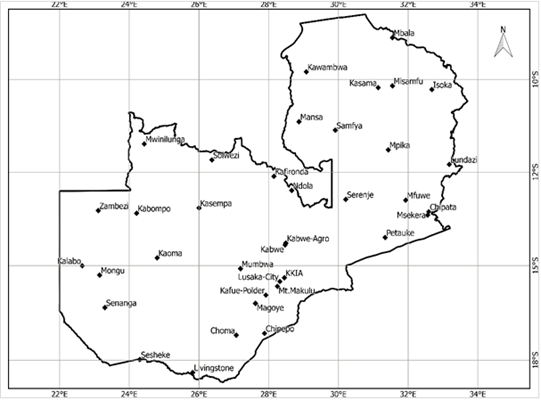

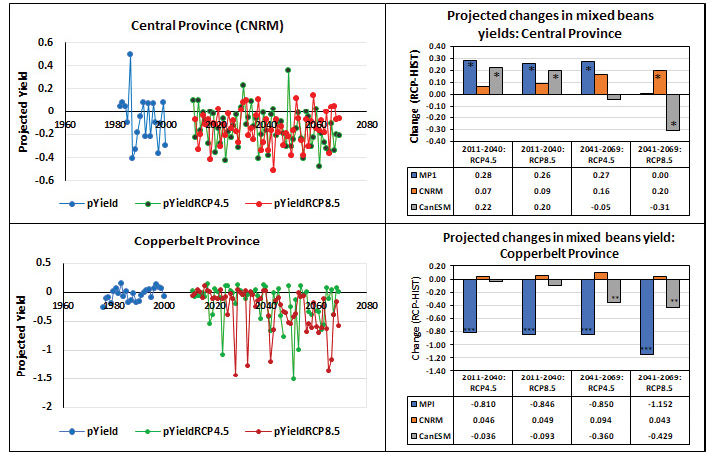
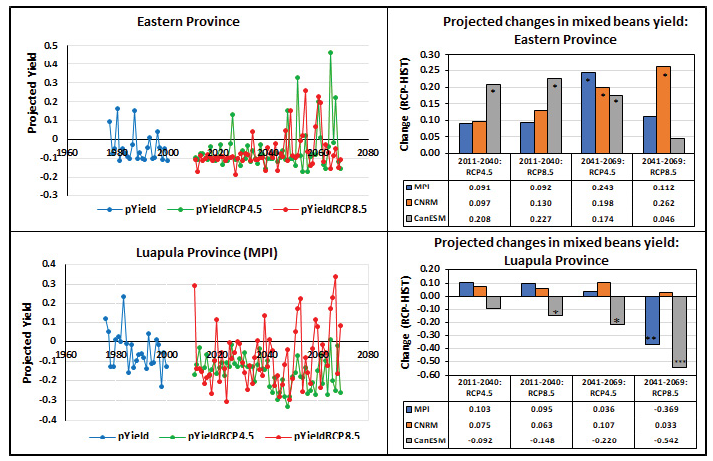
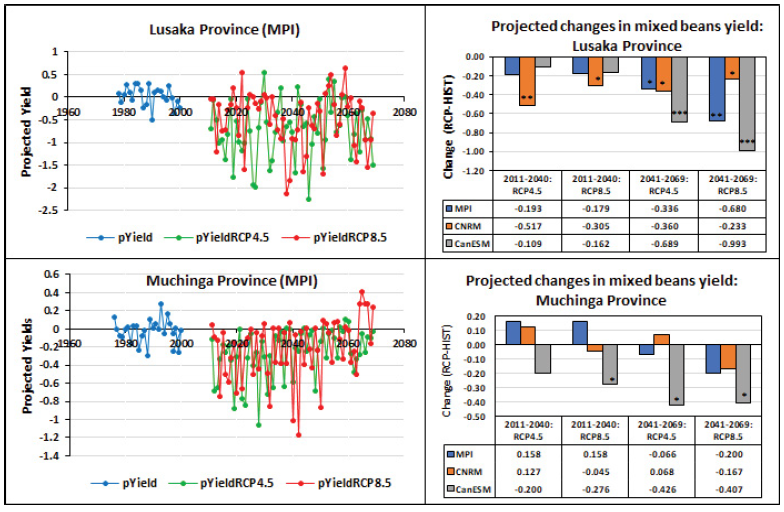
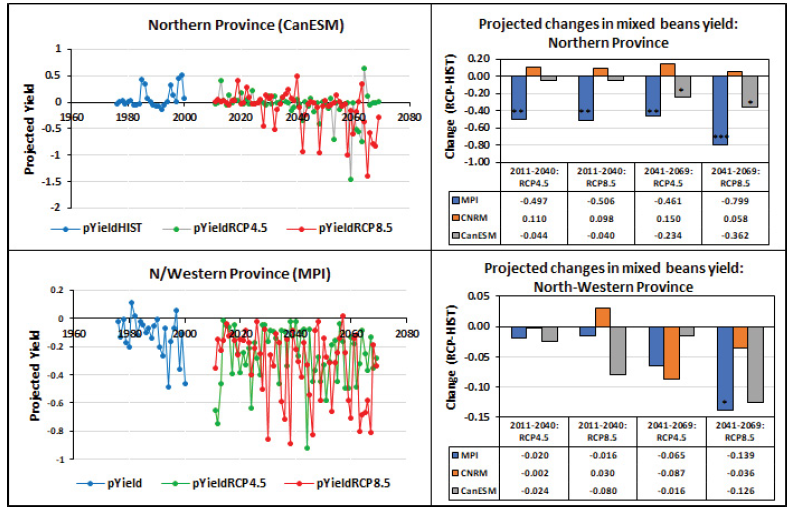
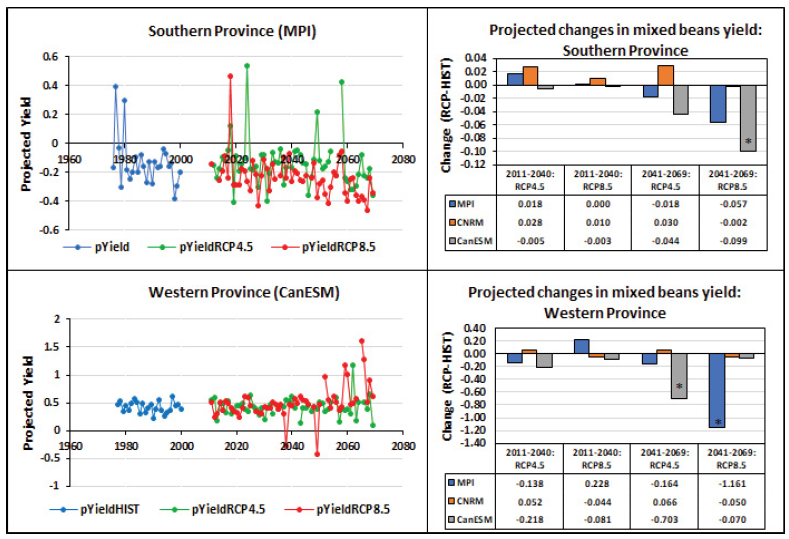

 Impact Factor: * 4.1
Impact Factor: * 4.1 Acceptance Rate: 75.32%
Acceptance Rate: 75.32%  Time to first decision: 10.4 days
Time to first decision: 10.4 days  Time from article received to acceptance: 2-3 weeks
Time from article received to acceptance: 2-3 weeks 